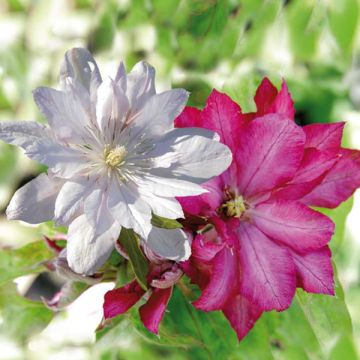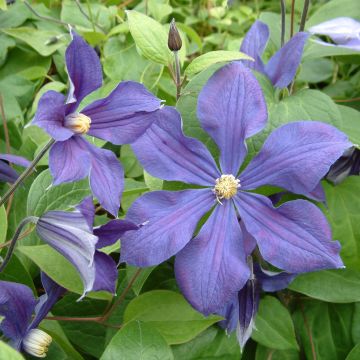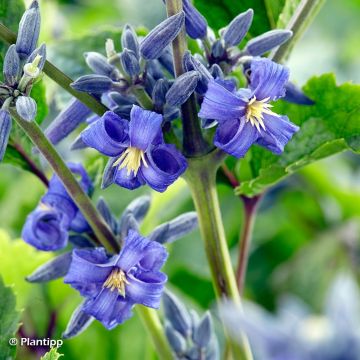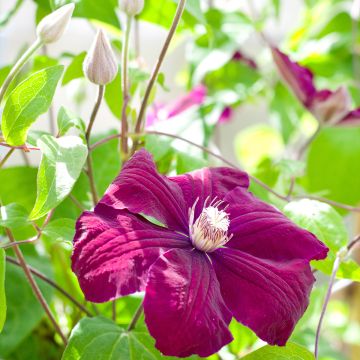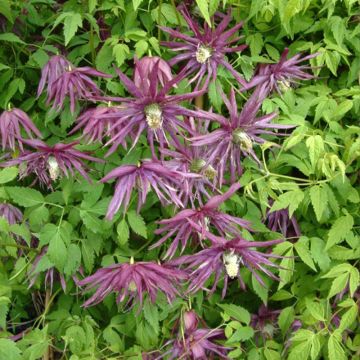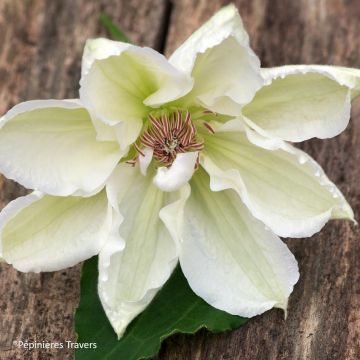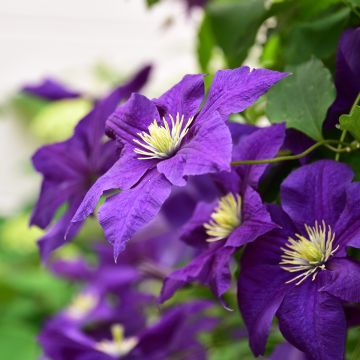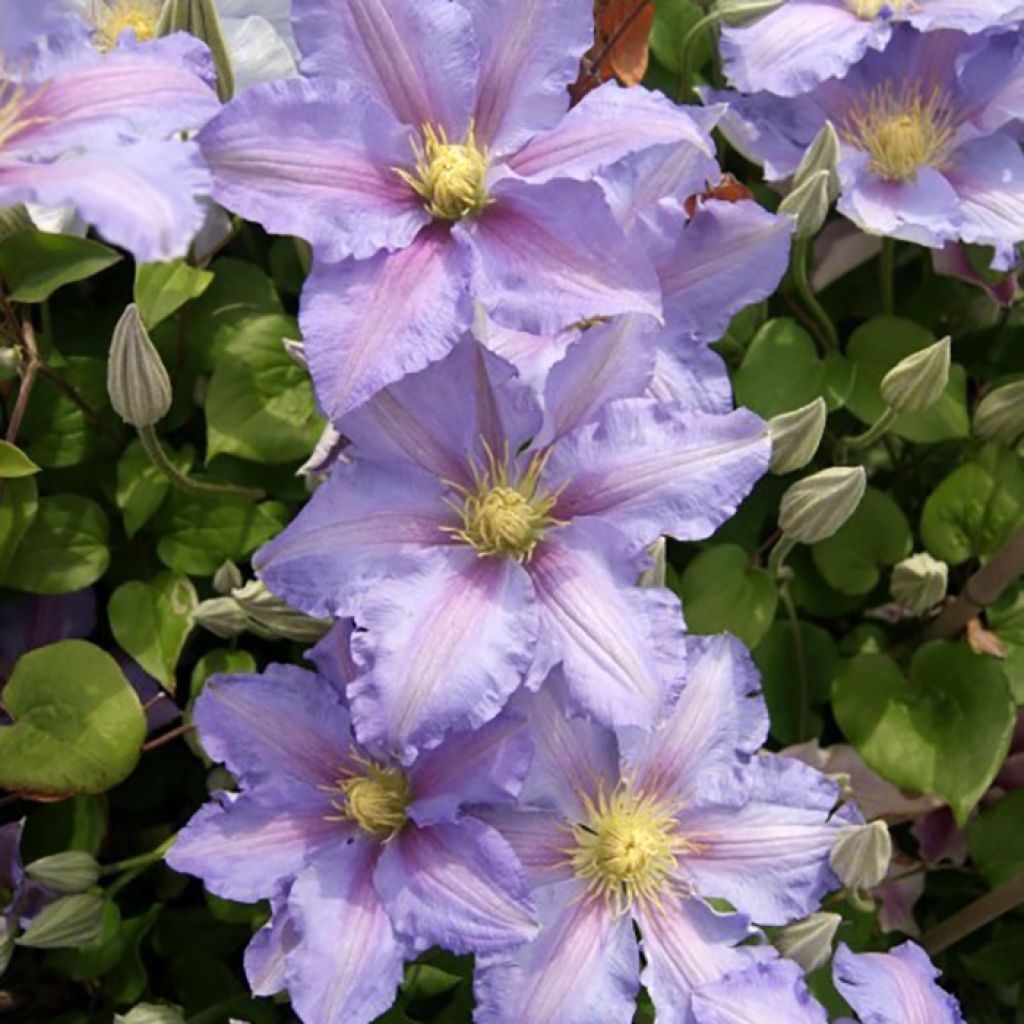

Clematis Spotlight
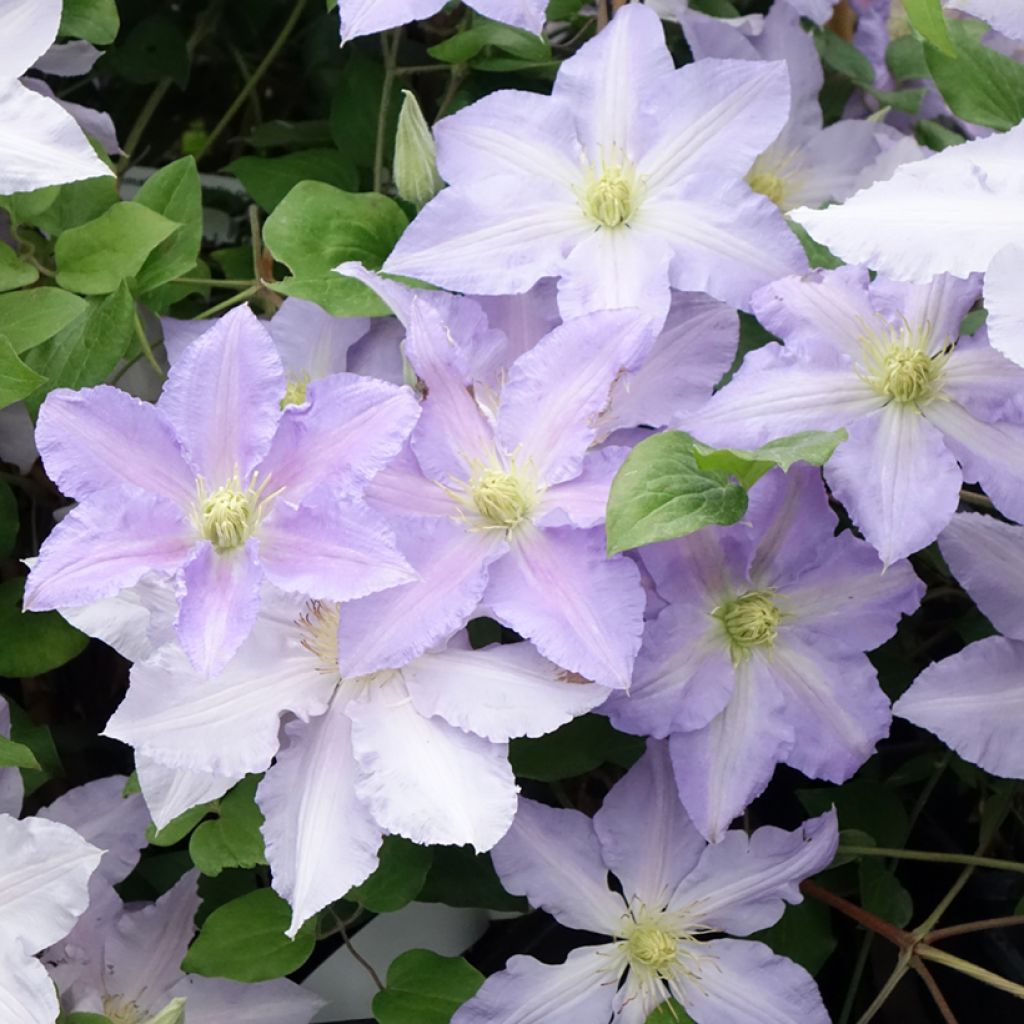

Clematis Spotlight
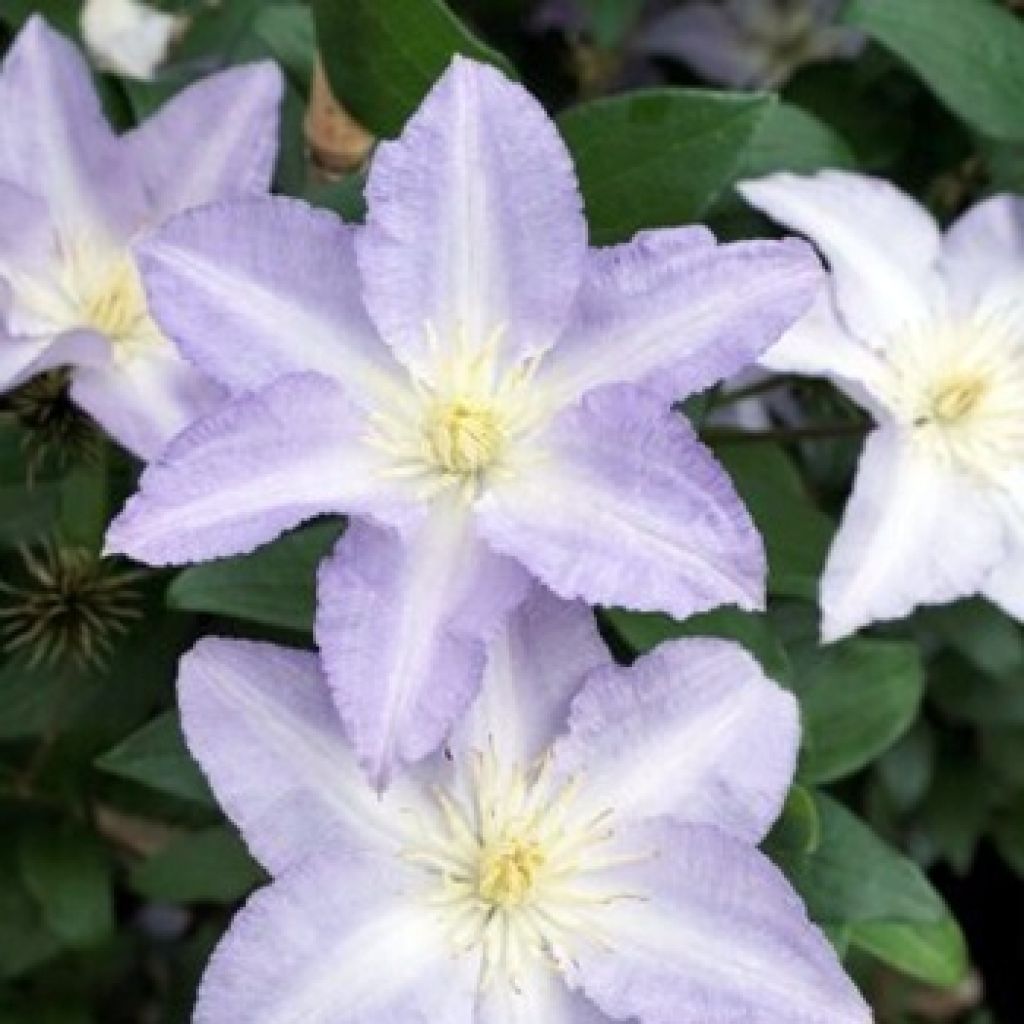

Clematis Spotlight
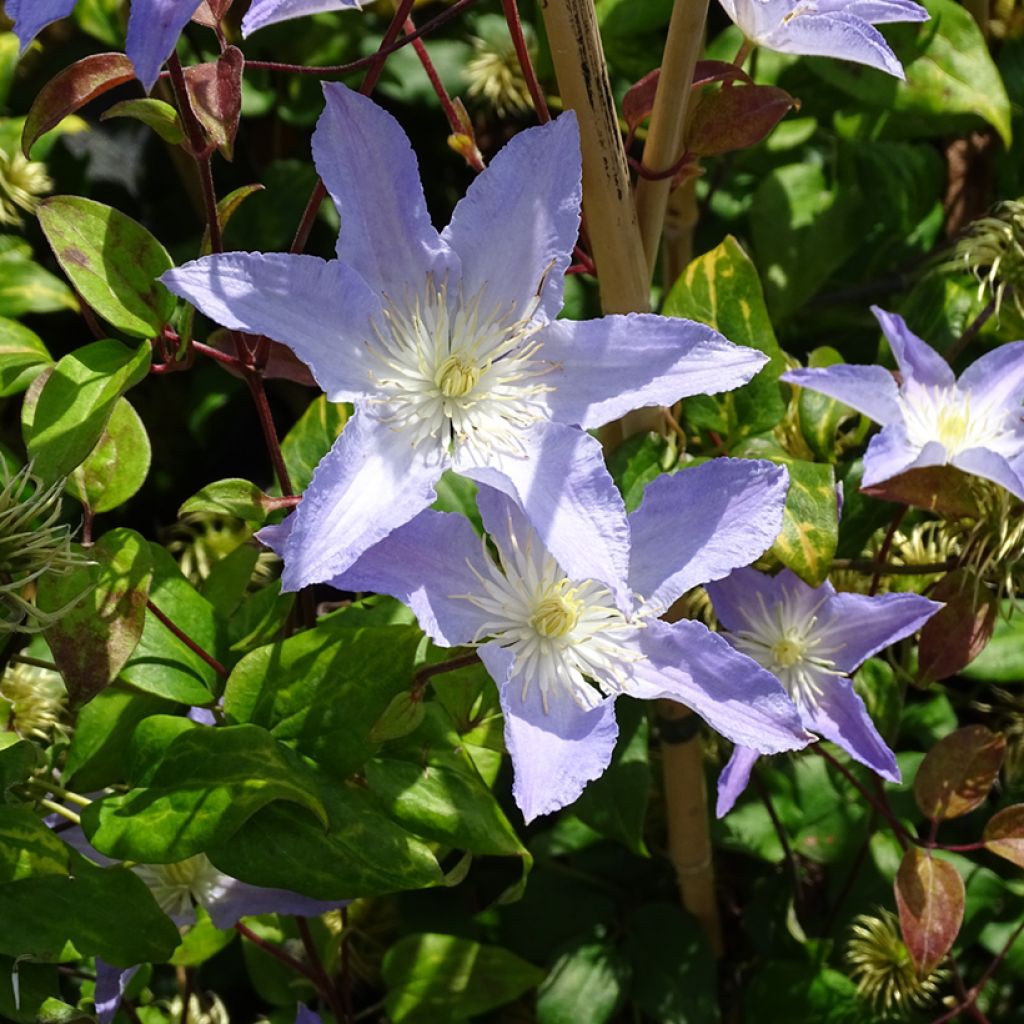

Clematis Spotlight
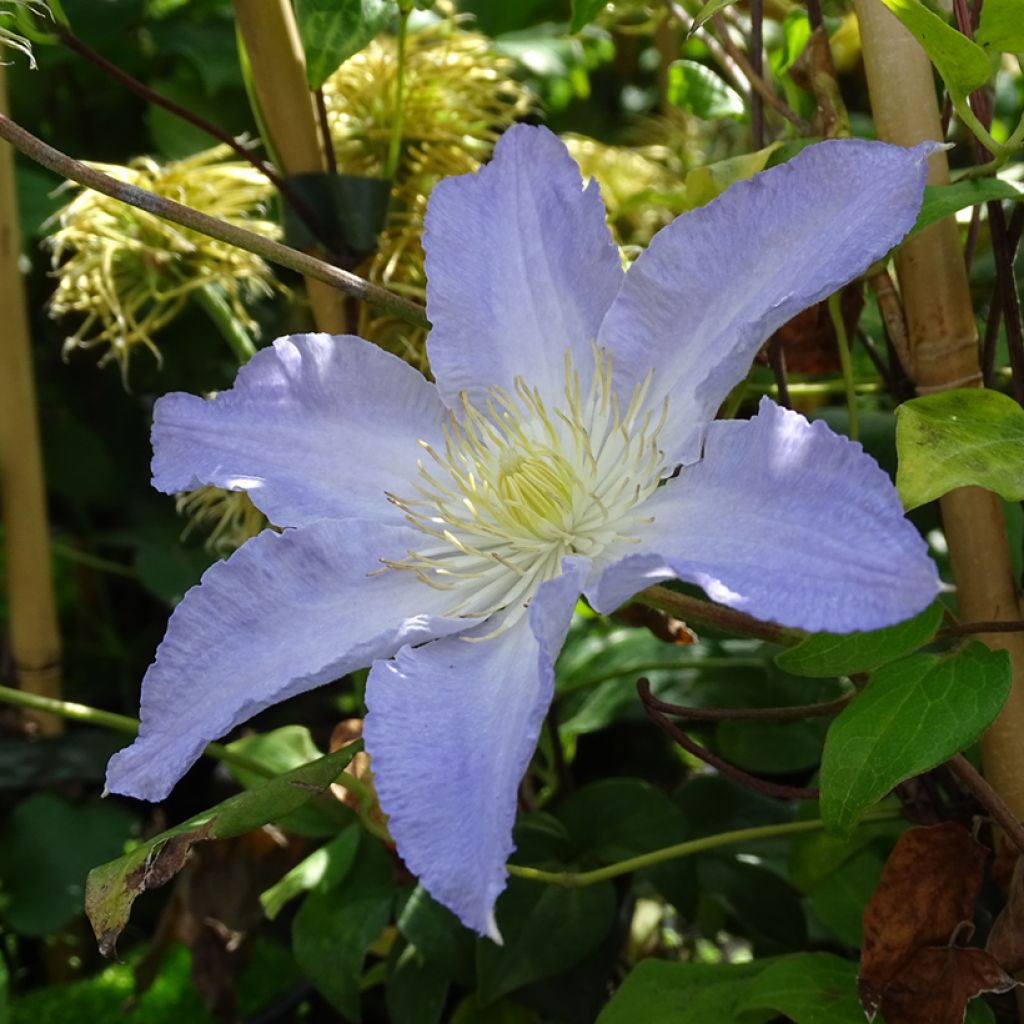

Clematis Spotlight
Clematis Spotlight
Clematis patens Spotlight (Zo08160)
Early Large-flowered Clematis
Thanks to the individuals (Laéticia V. for order preparation and S.A. from the shipping department), the received clematis is healthy. Planted at the base of the "Synactif by Shiseido" rose bush, I am now patiently awaiting its recovery (or lack thereof)...
Thierry, 30/04/2022
Special offer!
Receive a €20 voucher for any order over €90 (excluding delivery costs, credit notes, and plastic-free options)!
1- Add your favorite plants to your cart.
2- Once you have reached €90, confirm your order (you can even choose the delivery date!).
3- As soon as your order is shipped, you will receive an email containing your voucher code, valid for 3 months (90 days).
Your voucher is unique and can only be used once, for any order with a minimum value of €20, excluding delivery costs.
Can be combined with other current offers, non-divisible and non-refundable.
Home or relay delivery (depending on size and destination)
Schedule delivery date,
and select date in basket
This plant carries a 6 months recovery warranty
More information
We guarantee the quality of our plants for a full growing cycle, and will replace at our expense any plant that fails to recover under normal climatic and planting conditions.
Would this plant suit my garden?
Set up your Plantfit profile →
Description
Clematis 'Spotlight' is distinguished by particularly bright star-shaped flowers, in a pale mauve-blue, with pink central bands that become very light when fully open, giving it character and texture. It also stands out for its small size, great for small gardens and terraces. This variety blooms generously in spring, and again in late summer.
Clematis belong to the Ranunculaceae family. They are found in Europe, the Himalayas, China, Australia, and North and Central America. The 'Spotlight' variety, recently introduced in the Netherlands, is a perennial, semi-woody climbing plant that will reach about 2m (7ft) high, with a minimum spread of 1m (3ft). This clematis bears single flowers, that can reach 10cm (4in) in diameter, on the previous year's shoots, in May-June, and then on the current year's shoots in September, depending on the climate. The flowers are solitary, with 6 broad pointed petals with wavy edges that slightly overlap. The flower's centre is adorned with a crown of pale yellow stamens. The flowers are followed by decorative silver-grey feathery seed heads that persist until winter. The stems bear smoothleaves, divided into 3 elliptical to lanceolate, dark green leaflets. This clematis clings firmly to its support or host plant through transformed petioles that become tendrils. Its deciduous foliage dries up in autumn.
Plant clematis with your climbing or rambling roses ('New Dawn', 'Mme Caroline Testout', 'Pink Ghislaine de Feligonde'), to extend the flowering of your walls and pergolas until the end of summer. It is a diverse genus with flowers in all colours, shapes, and sizes. Take advantage of their ease of cultivation to give your garden a romantic and bohemian touch. 'Spotlight' will go well with the pink flowers of the Isabella clematis, the red ones of Rebecca, or the white ones of the 'Superba' or 'Miss Bateman' varieties, for climbing a small fence or covering a wall exposed to the morning sun. Sweet peas also complement small clematis and provide fragrance.
Tips: Avoid excessive fertiliser applications which may stimulate foliage growth at the expense of flowers. Do not mulch to avoid excessive moisture.
Report an error about the product description
Clematis Spotlight in pictures
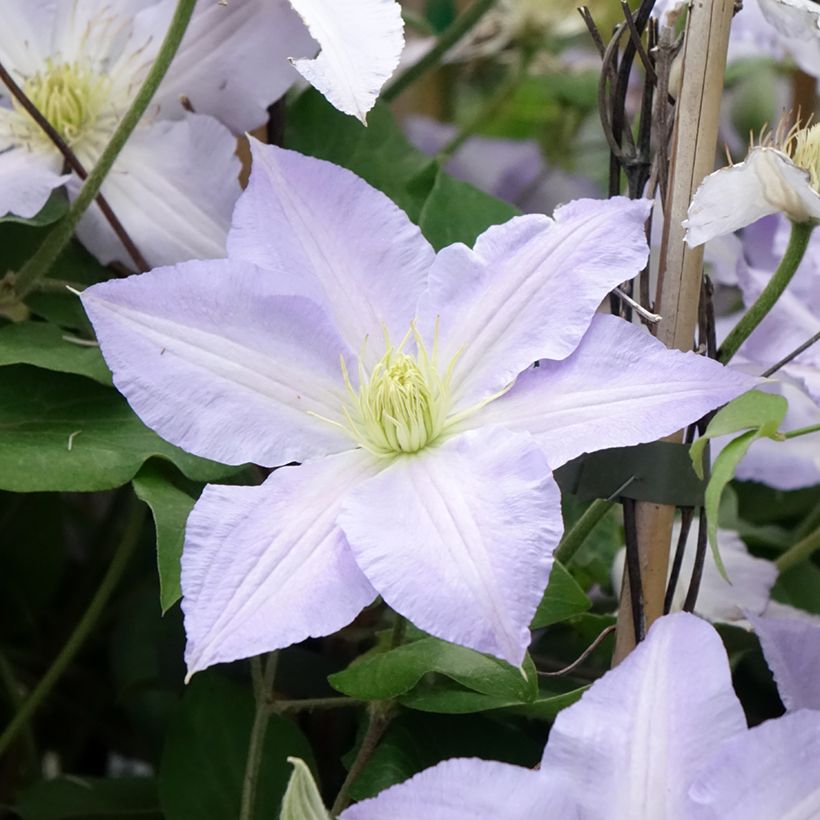

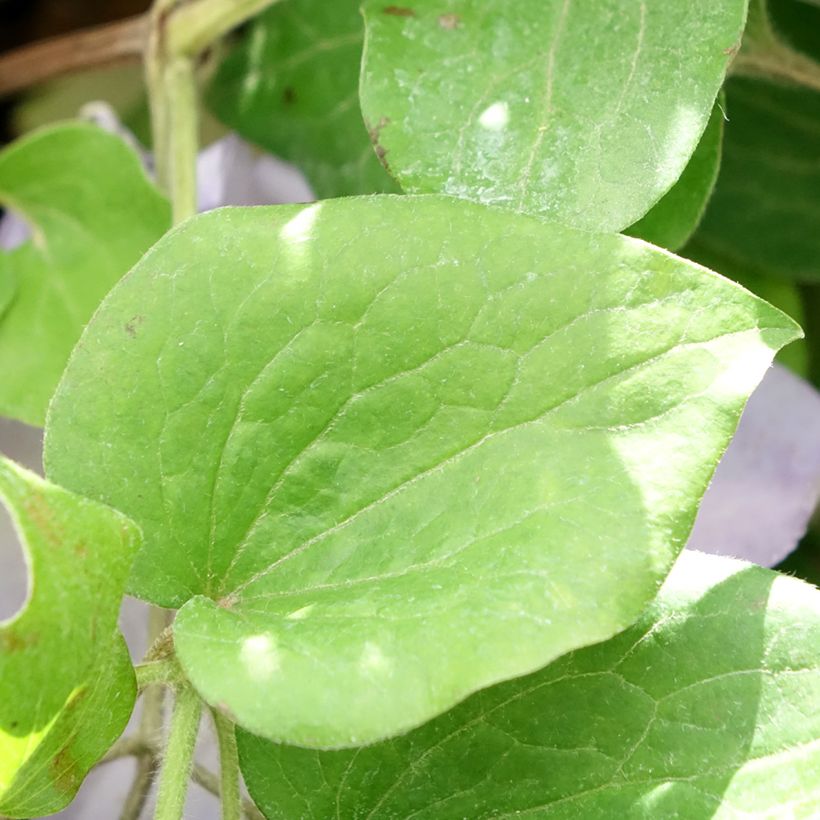



Plant habit
Flowering
Foliage
Botanical data
Clematis
patens
Spotlight (Zo08160)
Ranunculaceae
Early Large-flowered Clematis
Cultivar or hybrid
Planting and care
Clematis 'Spotlight' will like a sunny or lightly shaded position. Plant it in fertile, humus-rich, well-drained soil, shading the roots and base of the stem (with a flat tile, for example). Clematis can wilt in excessively wet soil. Plant it with the root ball at an angle, covering it with 3 cm (1in) of soil, in well-worked soil, lightened with good compost and coarse sand. After planting, prune the Clematis stems to about 30 cm (12in) above a healthy pair of buds. Water regularly for the first few weeks, but be careful not to let the water stagnate as this can cause fungus to develop at the neck. Mulch all Clematis in February with garden compost or well-rotted manure, avoiding direct contact with the stems. Train the stems, without crushing them, until the plant can grip onto supports by itself. Clematis also enjoy growing freely on neighbouring plants. After a few years, cover the base of your climbing Clematis with a small mound of soil to reduce the risk of clematis wilt while promoting new vigorous shoots from the crown. Voles and caterpillars can attack Clematis and devour the stems. Aphids and greenhouse whiteflies are also potential pests.
Planting period
Intended location
Care
-
, onOrder confirmed
Reply from on Promesse de fleurs
Similar products
Haven't found what you were looking for?
Hardiness is the lowest winter temperature a plant can endure without suffering serious damage or even dying. However, hardiness is affected by location (a sheltered area, such as a patio), protection (winter cover) and soil type (hardiness is improved by well-drained soil).

Photo Sharing Terms & Conditions
In order to encourage gardeners to interact and share their experiences, Promesse de fleurs offers various media enabling content to be uploaded onto its Site - in particular via the ‘Photo sharing’ module.
The User agrees to refrain from:
- Posting any content that is illegal, prejudicial, insulting, racist, inciteful to hatred, revisionist, contrary to public decency, that infringes on privacy or on the privacy rights of third parties, in particular the publicity rights of persons and goods, intellectual property rights, or the right to privacy.
- Submitting content on behalf of a third party;
- Impersonate the identity of a third party and/or publish any personal information about a third party;
In general, the User undertakes to refrain from any unethical behaviour.
All Content (in particular text, comments, files, images, photos, videos, creative works, etc.), which may be subject to property or intellectual property rights, image or other private rights, shall remain the property of the User, subject to the limited rights granted by the terms of the licence granted by Promesse de fleurs as stated below. Users are at liberty to publish or not to publish such Content on the Site, notably via the ‘Photo Sharing’ facility, and accept that this Content shall be made public and freely accessible, notably on the Internet.
Users further acknowledge, undertake to have ,and guarantee that they hold all necessary rights and permissions to publish such material on the Site, in particular with regard to the legislation in force pertaining to any privacy, property, intellectual property, image, or contractual rights, or rights of any other nature. By publishing such Content on the Site, Users acknowledge accepting full liability as publishers of the Content within the meaning of the law, and grant Promesse de fleurs, free of charge, an inclusive, worldwide licence for the said Content for the entire duration of its publication, including all reproduction, representation, up/downloading, displaying, performing, transmission, and storage rights.
Users also grant permission for their name to be linked to the Content and accept that this link may not always be made available.
By engaging in posting material, Users consent to their Content becoming automatically accessible on the Internet, in particular on other sites and/or blogs and/or web pages of the Promesse de fleurs site, including in particular social pages and the Promesse de fleurs catalogue.
Users may secure the removal of entrusted content free of charge by issuing a simple request via our contact form.
The flowering period indicated on our website applies to countries and regions located in USDA zone 8 (France, the United Kingdom, Ireland, the Netherlands, etc.)
It will vary according to where you live:
- In zones 9 to 10 (Italy, Spain, Greece, etc.), flowering will occur about 2 to 4 weeks earlier.
- In zones 6 to 7 (Germany, Poland, Slovenia, and lower mountainous regions), flowering will be delayed by 2 to 3 weeks.
- In zone 5 (Central Europe, Scandinavia), blooming will be delayed by 3 to 5 weeks.
In temperate climates, pruning of spring-flowering shrubs (forsythia, spireas, etc.) should be done just after flowering.
Pruning of summer-flowering shrubs (Indian Lilac, Perovskia, etc.) can be done in winter or spring.
In cold regions as well as with frost-sensitive plants, avoid pruning too early when severe frosts may still occur.
The planting period indicated on our website applies to countries and regions located in USDA zone 8 (France, United Kingdom, Ireland, Netherlands).
It will vary according to where you live:
- In Mediterranean zones (Marseille, Madrid, Milan, etc.), autumn and winter are the best planting periods.
- In continental zones (Strasbourg, Munich, Vienna, etc.), delay planting by 2 to 3 weeks in spring and bring it forward by 2 to 4 weeks in autumn.
- In mountainous regions (the Alps, Pyrenees, Carpathians, etc.), it is best to plant in late spring (May-June) or late summer (August-September).
The harvesting period indicated on our website applies to countries and regions in USDA zone 8 (France, England, Ireland, the Netherlands).
In colder areas (Scandinavia, Poland, Austria...) fruit and vegetable harvests are likely to be delayed by 3-4 weeks.
In warmer areas (Italy, Spain, Greece, etc.), harvesting will probably take place earlier, depending on weather conditions.
The sowing periods indicated on our website apply to countries and regions within USDA Zone 8 (France, UK, Ireland, Netherlands).
In colder areas (Scandinavia, Poland, Austria...), delay any outdoor sowing by 3-4 weeks, or sow under glass.
In warmer climes (Italy, Spain, Greece, etc.), bring outdoor sowing forward by a few weeks.

































